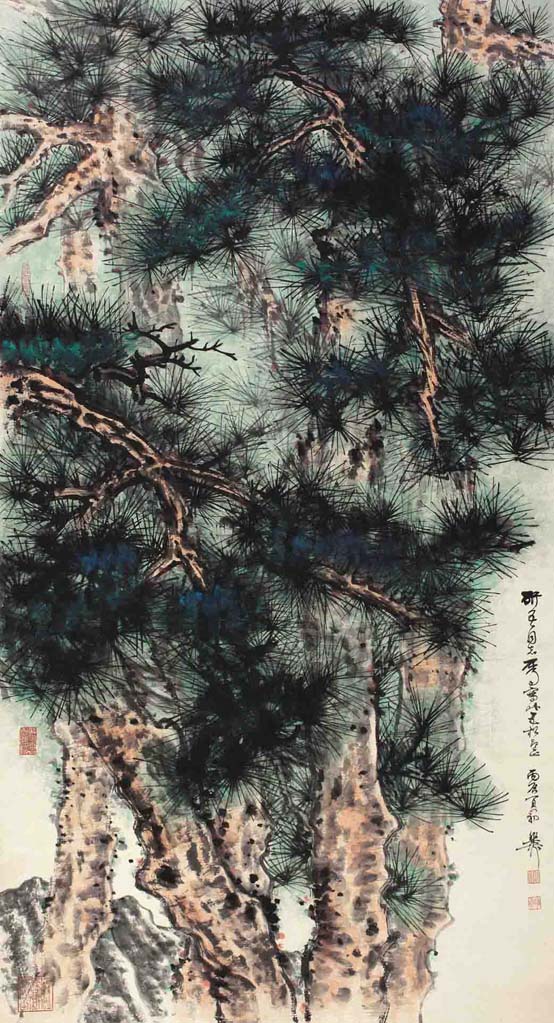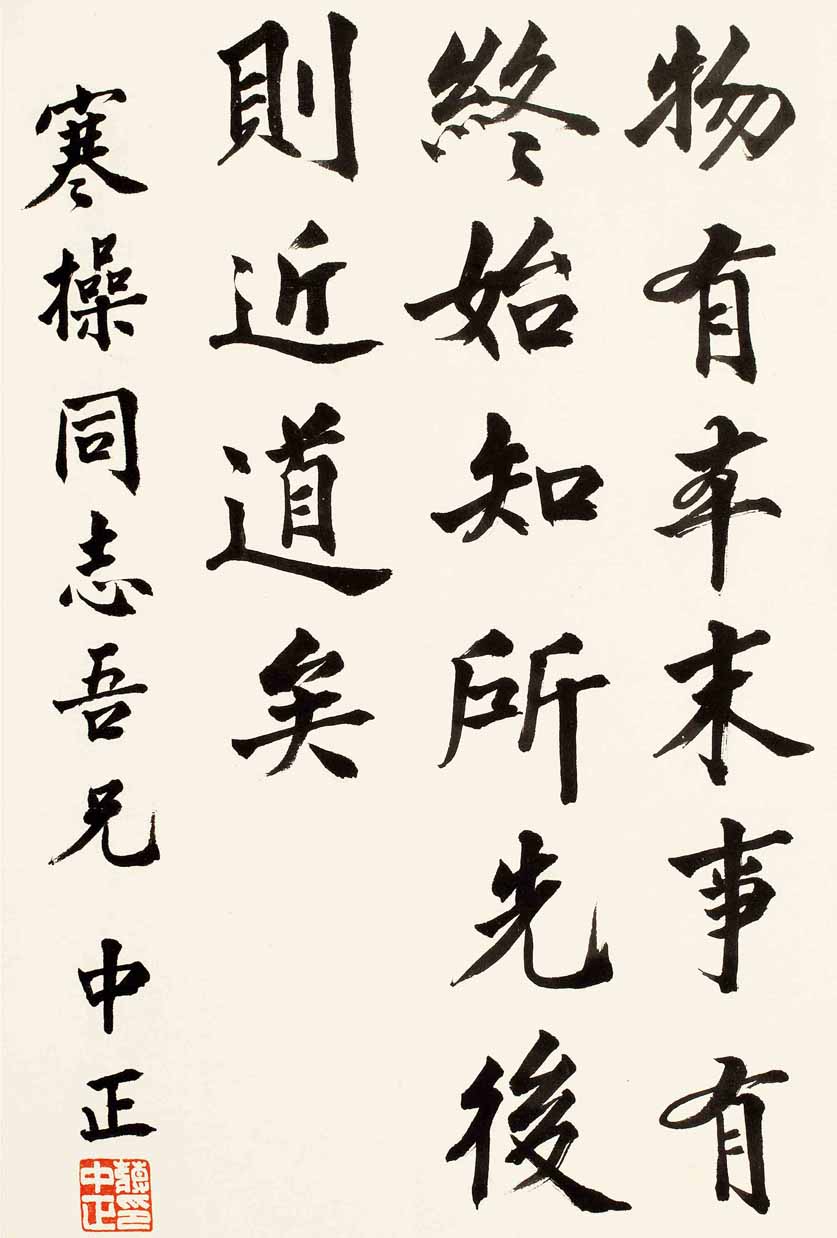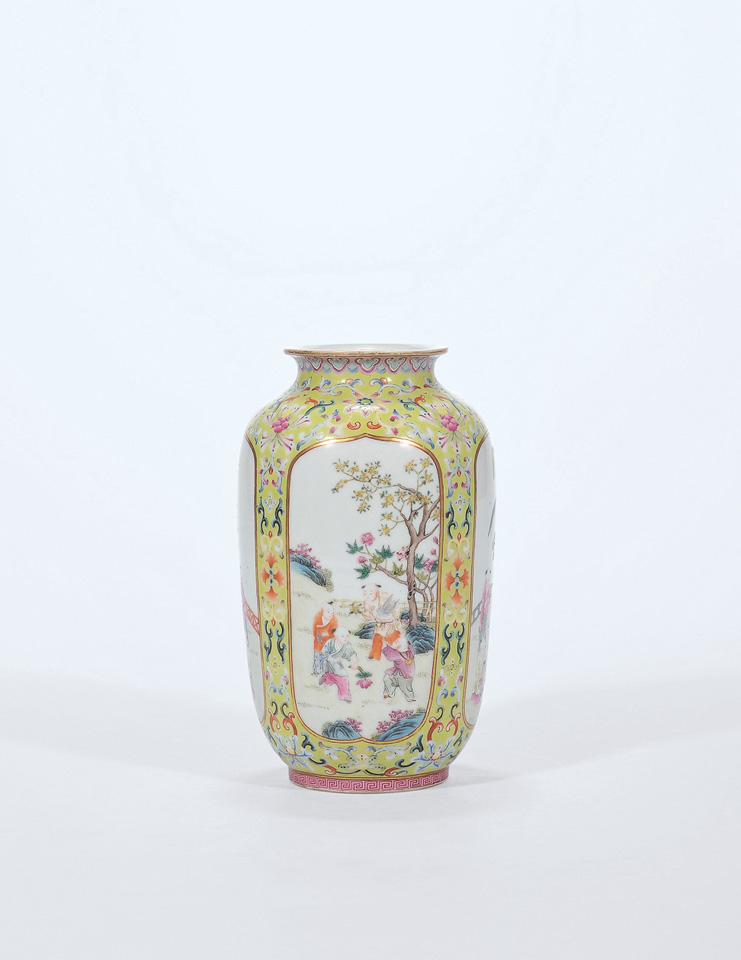- Lot
- Information
China Guardian, one of the oldest auction houses in the Chinese mainland, concluded its 33rd quarterly sales, bringing in about 290 million yuan in 17 auctions over the four days of March 23-25.
The Chinese calligraphy and paintings sales earned 210 million yuan, about 72.75% percent of the total sales.

Pine by Xie Zhiliu
Among the top lots in contemporary Chinese paintings, Pine by Xie Zhiliu (1910-1997) sold for 3.45 million yuan, nearly ten times its estimated value. Xie borrowed techniques from Song Dynasty (960-1279) painters and shaped his own traditional yet energetic style.
Horse by Xu Beihong (1895-1953) sold for 1.84 million yuan. It was produced during the early 1930s to display Xu’s deep love for the motherland when the Japanese military started their full-scale invasion of China.
A painting of the Wuxia Gorge was made by Zhang Daqian (1899-1983) as a gift to his friend Wang Qiumei, a devoted follower of Sun Yat-sen. It was sold for 1.38 million yuan.
A collection of works by 125 celebrities produced during the 1920s-1940s was 100 percent sold by lot, bringing in 17 million yuan. A senior official in the Kuomingtang, the collector Liang Hancao built close relationships with many political and social celebrities, such as Chiang Kai-shek, Feng Yuxiang and Li Zongren, and invited them to produce calligraphy artworks for him.

A piece of calligraphy by Chiang Kai-shek
The top lots included a piece of calligraphy by Yang Hucheng, which sold for 2.64 million yuan, and another piece by Chiang Kai-shek, which sold for 2.35 million yuan.
The ancient calligraphy and paintings offered by China Guardian have long been favored by domestic collectors. Among the 800-odd pieces - most from the Ming Dynasty (1368-1644) and Qing dynasty (1644-1924) - the highlights include Flowers by Xiang Shengmo (1597-1658), which sold for 1.38 million yuan; Landscape (632,500 yuan) by Gong Xian and a piece of calligraphy by Yi Bingshou (1754-1815).
In addition, a piece of calligraphy by Fu Shan (1605-1690) sold for 1.08 million yuan. Other highlights included Character and Landscape (977,500 yuan) by He Haixia (1908-1999), and Pheasant and Flowers (598,000 yuan) by Yan Bolong (1898-1954).
The porcelain and works of art sales earned another 67 million yuan.

A famille-rose vase from the Jiaqing Period sold for 1.01 million yuan
A famille-rose vase from the Jiaqing Period sold for 1.01 million yuan. It featured sixteen kids playing cheerfully, an image widely used in China to express expectation of a growing and thriving family. A filigree enamel champignon made during the Qianlong Period sold for 1.15 million yuan.
In addition, a white jade vase from the Qing Dynasty sold for 575,000 yuan in the porcelain and jade sales, followed by a famille-rose vase (517,500 yuan) by Wang Yunquan and a white jade vase (402,500 yuan) from the Qing Dynasty.
A Qing Dynasty dragon robe, an item of clothing exclusively used by emperors, was sold for 897,000 yuan, about four times the estimate. The basic form of the dragon robe is simple. It is a long robe, reaching to the ankles, with long sleeves and a circular opening for the neck. The yellow gown is made of rich silk, decorated with dragons, an animal strongly associated with dignity and power in Chinese culture – a fitting symbol for those who ruled China under a divine-mandate. As a Chinese proverb goes, ‘the reign of every emperor starts when he dons his new robes.’
The furniture sale saw many impressive items. A huanghuali square corner cabinet from the Qing Dynasty was sold for 828,000 yuan, followed by a tielimu rectangular table with everted flages (437,000 yuan).
The rare books and scripts sales gained 11 million yuan.
For more information, please browse the website at:
http://english.cguardian.com/results.php